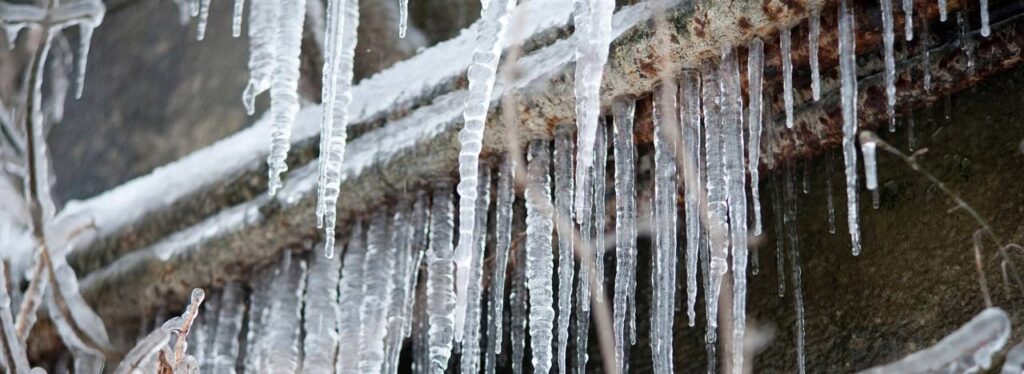We have encountered this article pertaining to Helpful Tips to Prevent Frozen Pipes this Winter directly below on the web and felt it made perfect sense to quickly share it with you here.

Cold weather can wreak havoc on your pipes, particularly by freezing pipelines. Right here's just how to avoid it from taking place and what to do if it does.
Introduction
As temperatures decrease, the threat of frozen pipelines boosts, possibly resulting in pricey repairs and water damages. Understanding how to avoid icy pipelines is crucial for house owners in cool environments.
Recognizing Frozen Pipes
What triggers pipelines to freeze?
Pipes freeze when subjected to temperature levels below 32 ° F (0 ° C) for extended durations. As water inside the pipelines freezes, it expands, putting pressure on the pipe wall surfaces and possibly triggering them to burst.
Dangers and damages
Frozen pipelines can result in supply of water disruptions, residential or commercial property damage, and pricey repair services. Ruptured pipes can flood homes and create comprehensive architectural damage.
Indicators of Frozen Pipeline
Recognizing frozen pipes early can prevent them from rupturing.
Exactly how to recognize frozen pipelines
Search for reduced water circulation from taps, uncommon odors or noises from pipes, and visible frost on subjected pipelines.
Avoidance Tips
Insulating vulnerable pipes
Wrap pipelines in insulation sleeves or make use of heat tape to secure them from freezing temperature levels. Focus on pipes in unheated or outside areas of the home.
Home heating methods
Maintain interior rooms properly warmed, especially locations with pipes. Open cabinet doors to allow cozy air to flow around pipelines under sinks.
Safeguarding Outdoor Plumbing
Yard pipes and outdoor faucets
Detach and drain pipes garden tubes before winter season. Mount frost-proof spigots or cover outside taps with insulated caps.
What to Do If Your Pipelines Freeze
Immediate actions to take
If you presume icy pipes, maintain faucets available to alleviate pressure as the ice thaws. Use a hairdryer or towels soaked in hot water to thaw pipelines gradually.
Long-Term Solutions
Architectural adjustments
Consider rerouting pipes away from exterior walls or unheated areas. Add extra insulation to attic rooms, cellars, and crawl spaces.
Updating insulation
Buy high-quality insulation for pipelines, attic rooms, and wall surfaces. Appropriate insulation assists maintain regular temperature levels and minimizes the risk of icy pipelines.
Verdict
Protecting against frozen pipelines requires aggressive steps and quick actions. By recognizing the causes, indicators, and safety nets, home owners can secure their plumbing throughout cold weather.
5 Ways to Prevent Frozen Pipes
Drain Outdoor Faucets and Disconnect Hoses
First, close the shut-off valve that controls the flow of water in the pipe to your outdoor faucet. Then, head outside to disconnect and drain your hose and open the outdoor faucet to allow the water to completely drain out of the line. Turn off the faucet when done. Finally, head back to the shut-off valve and drain the remaining water inside the pipe into a bucket or container. Additionally, if you have a home irrigation system, you should consider hiring an expert to clear the system of water each year.
Insulate Pipes
One of the best and most cost-effective methods for preventing frozen water pipes is to wrap your pipes with insulation. This is especially important for areas in your home that aren’t exposed to heat, such as an attic. We suggest using foam sleeves, which can typically be found at your local hardware store.
Keep Heat Running at 65
Your pipes are located inside your walls, and the temperature there is much colder than the rest of the house. To prevent your pipes from freezing, The Insurance Information Institute suggests that you keep your home heated to at least 65 degrees, even when traveling. You may want to invest in smart devices that can keep an eye on the temperature in your home while you’re away.
Leave Water Dripping
Moving water — even a small trickle — can prevent ice from forming inside your pipes. When freezing temps are imminent, start a drip of water from all faucets that serve exposed pipes. Leaving a few faucets running will also help relieve pressure inside the pipes and help prevent a rupture if the water inside freezes.
Open Cupboard Doors
Warm your kitchen and bathroom pipes by opening cupboards and vanities. You should also leave your interior doors ajar to help warm air circulate evenly throughout your home.

Do you like reading about Preventing and dealing with frozen pipes? Create a comment down the page. We'd be glad to find out your feelings about this blog posting. We are looking forward that you come back again soon. I beg you pause to distribute this entry if you enjoyed it. Bless you for your time. Revisit us soon.
Call Today